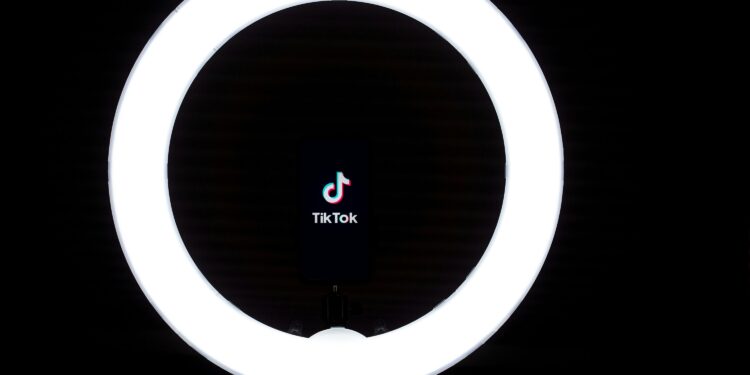The Algorithm is Listening. It Just Isn’t Learning.
The images flicker in succession: a young woman tearfully recounts her trauma while upbeat music plays in the background. A man confidently explains how ADHD has “actually helped” his productivity. A teenager lip-syncs to audio clips labeled “mental breakdown.” These are not isolated vignettes but part of a broader narrative shaped by TikTok’s algorithm—an ecosystem that rewards visibility and emotional engagement over accuracy and clinical grounding.
A study highlighted by The Guardian recently documented that over 52% of the 100 most-viewed TikTok videos tagged with “mental health tips” contained misleading or outright false information (source). This included unqualified self-diagnosis, promotion of non-evidence-based remedies, and misuse of diagnostic terminology. More troubling, these videos are watched not occasionally or passively, but habitually—especially by adolescents and young adults navigating actual psychological distress without professional guidance.
The problem is not merely misinformation. It is systematized, curated, and rewarded misinformation, optimized for a platform architecture that turns attention into currency.
When Personal Narrative is Mistaken for Clinical Guidance
TikTok’s appeal lies in its immediacy. In thirty seconds or less, creators—many well-intentioned, some simply opportunistic—offer condensed “insights” into trauma recovery, relationship dysfunction, anxiety reduction, or neurodivergence. Phrases such as “boundaries,” “toxic behavior,” and “emotional dysregulation” recur frequently, often removed from their clinical context and rendered interchangeable with common interpersonal conflict.
This linguistic drift, in which legitimate psychological concepts become shorthand for subjective experiences, is rarely harmless. According to Engadget, TikTok’s algorithm intensifies exposure to these themes once a user lingers on even one such video, creating a closed feedback loop that reinforces unverified ideas (source). The personalization feature of the platform, designed to optimize engagement, thus amplifies content that may be damaging—especially for viewers already experiencing mental vulnerability.
The blurred boundary between storytelling and clinical advice is where the platform’s structure becomes most concerning. As The Guardian further notes in its review of the top offending videos, many clips present opinions as facts or repurpose DSM-5 criteria without proper attribution or understanding (source).
Consequences Beyond the Screen
The downstream effects of such misinformation extend into real-world healthcare settings. Clinicians are increasingly reporting that patients, particularly adolescents, arrive at therapy with firm convictions formed online. They present symptoms not through clinical descriptors but through social media language: “I have rejection-sensitive dysphoria,” “I’m dissociating every day,” or “My attachment style is anxious-avoidant.”
A joint report from the University of British Columbia and several UK school systems indicated a surge in self-diagnosis, particularly of ADHD and autism spectrum disorders, following viral trends that “normalize” these conditions (source). These diagnoses are not inherently invalid. But the process of arriving at them—via 15-second clips and anecdotal monologues—is clinically inappropriate and potentially hazardous.
More gravely, false advice regarding unproven herbal treatments or self-guided trauma “detoxes” have resulted in physiological complications. Emergency physicians in several UK hospitals have documented young adults presenting with symptoms of serotonin syndrome after combining over-the-counter adaptogens promoted by TikTok creators with prescribed SSRIs.
The Platform’s Limited Safeguards
To its credit, TikTok has acknowledged the issue—at least superficially. It has instituted warning labels under certain hashtags, directing users to verified mental health resources. However, as Petrie-Flom Center researchers at Harvard Law point out, these disclaimers are neither consistent nor prominently displayed, and they do little to mitigate the persuasive power of charismatic creators (source).
The platform claims that it removes nearly 98% of flagged medical misinformation content proactively, citing internal audits. But the standard for what qualifies as “misinformation” remains unclear. Personal experience, while valuable, is not a substitute for clinical evidence—yet TikTok does little to differentiate the two.
A pilot collaboration with the British Psychological Society, currently in limited rollout, includes trained clinicians on TikTok’s content moderation panels. Early signs suggest a marginal reduction in engagement with misinformation-tagged content, particularly among users under 18. However, scalability, editorial independence, and resource allocation remain critical challenges to implementation.
Digital Literacy is Not Optional
Rather than call for wholesale censorship—an approach fraught with ethical and constitutional concerns—policy experts increasingly argue for media literacy education as a frontline intervention. Equipping young people with tools to evaluate source credibility, recognize manipulative tactics, and distinguish subjective opinion from therapeutic consensus must become foundational in digital pedagogy.
At the clinical level, providers can integrate brief media-literacy discussions into intake assessments. They can offer curated resources and even collaborate with trusted creators to produce short-form content that reflects evidence-based practice. Organizations such as the American Psychological Association and the National Alliance on Mental Illness have begun to create downloadable toolkits for exactly this purpose.
Moreover, public health campaigns might benefit from mimicking the visual vernacular of TikTok while avoiding its epistemic looseness. Short, informative videos featuring licensed professionals—not celebrities or wellness influencers—could potentially reclaim some of the digital territory lost to misinformation.
Beyond Platform Accountability
The challenge here is not only institutional but cultural. We inhabit a media landscape in which emotional authenticity is often privileged over empirical rigor. In such a climate, the distinction between “relatable” and “reliable” content is too easily obscured. The burden of discernment, therefore, must not fall solely on the user but be shared among platforms, policymakers, clinicians, and educators.
Still, one must resist the temptation to demonize TikTok categorically. It has, in many cases, served as a portal to help-seeking behavior that might not otherwise occur. Its power lies not in its content alone but in its capacity to convene attention. Harnessing that attention toward informed, constructive dialogue is the next step—a task that demands urgency, not theatrical outrage.
A Call for Structural Precision
Mental health is not an accessory trend. It is a clinical domain requiring precise language, ethical grounding, and methodological integrity. If our public discourse continues to rely on the aestheticization of suffering, we risk normalizing pathologies rather than treating them.
TikTok will continue to shape how young people think about themselves and their emotional lives. The question is whether the medical community, public institutions, and tech platforms can converge to ensure those conversations are informed by more than algorithmic guesswork.
If nothing else, the findings presented in The Guardian and supported by other outlets such as Engadget and the New York Post should act as a cultural wake-up call (source). The moment demands structural clarity, not performative concern. Mental health deserves better than thirty seconds of distorted truth.















